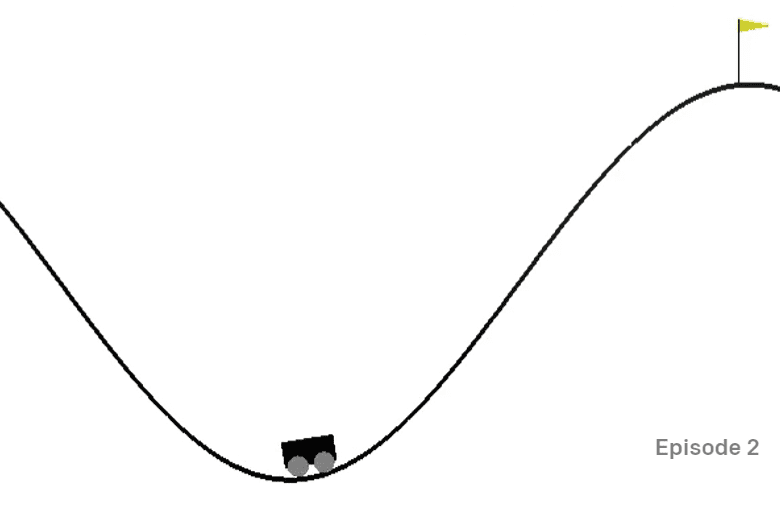2.6 KiB
Train Mountain Car
OpenAI Gym has been designed in such a way that all environments provide the same API - i.e. the same methods reset, step and render, and the same abstractions of action space and observation space. Thus is should be possible to adapt the same reinforcement learning algorithms to different environments with minimal code changes.
A Mountain Car Environment
Mountain Car environment contains a car stuck in a valley:

The goal is to get out of the valley and capture the flag, by doing at each step one of the following actions:
| Value | Meaning |
|---|---|
| 0 | Accelerate to the left |
| 1 | Do not accelerate |
| 2 | Accelerate to the right |
The main trick of this problem is, however, that the car's engine is not strong enough to scale the mountain in a single pass. Therefore, the only way to succeed is to drive back and forth to build up momentum.
Observation space consists of just two values:
| Num | Observation | Min | Max |
|---|---|---|---|
| 0 | Car Position | -1.2 | 0.6 |
| 1 | Car Velocity | -0.07 | 0.07 |
Reward system for the mountain car is rather tricky:
- Reward of 0 is awarded if the agent reached the flag (position = 0.5) on top of the mountain.
- Reward of -1 is awarded if the position of the agent is less than 0.5.
Episode terminates if the car position is more than 0.5, or episode length is greater than 200.
Instructions
Adapt our reinforcement learning algorithm to solve the mountain car problem. Start with existing notebook.ipynb code, substitute new environment, change state discretization functions, and try to make existing algorithm to train with minimal code modifications. Optimize the result by adjusting hyperparameters.
Note: Hyperparameters adjustment is likely to be needed to make algorithm converge.
Rubric
| Criteria | Exemplary | Adequate | Needs Improvement |
|---|---|---|---|
| Q-Learning algorithm is successfully adapted from CartPole example, with minimal code modifications, which is able to solve the problem of capturing the flag under 200 steps. | A new Q-Learning algorithm has been adopted from the Internet, but is well-documented; or existing algorithm adopted, but does not reach desired results | Student was not able to successfully adopt any algorithm, but has mede substantial steps towards solution (implemented state discretization, Q-Table data structure, etc.) |